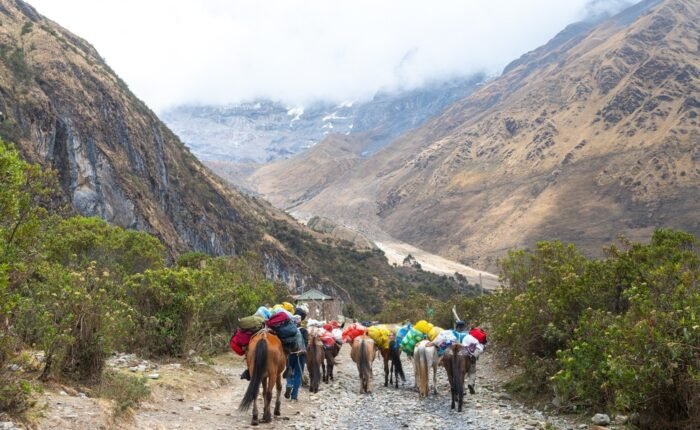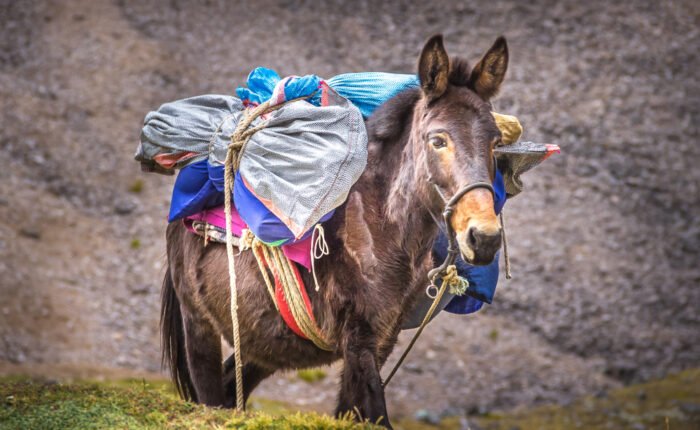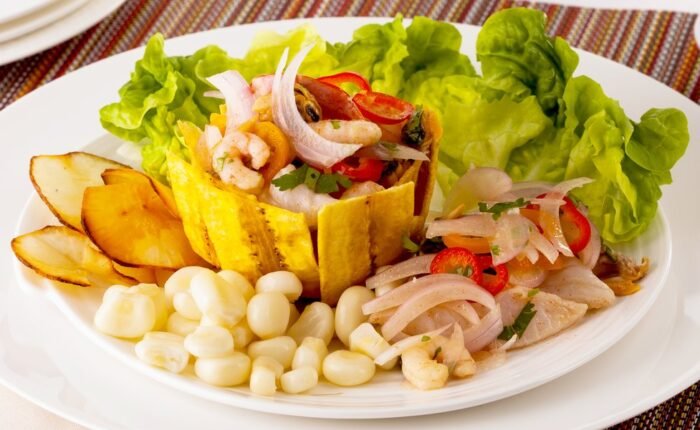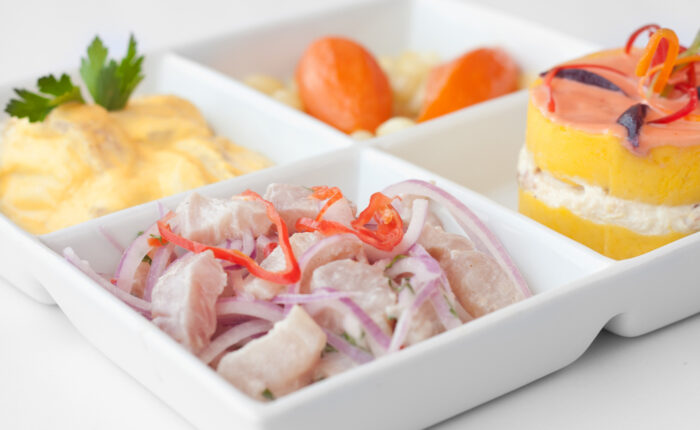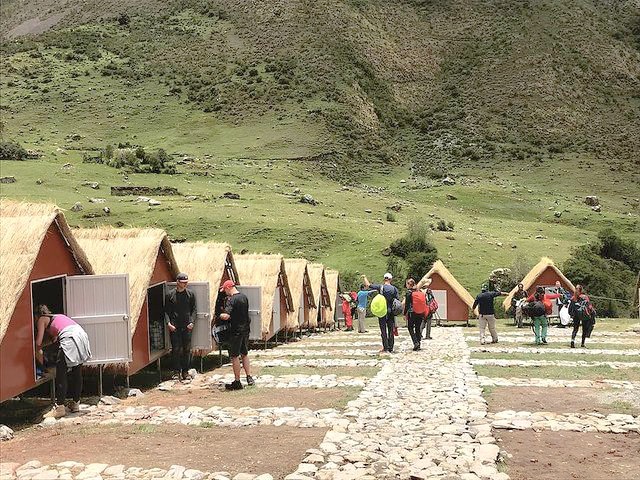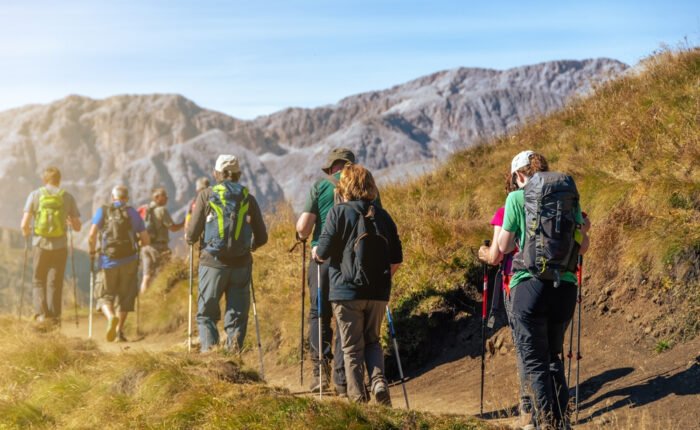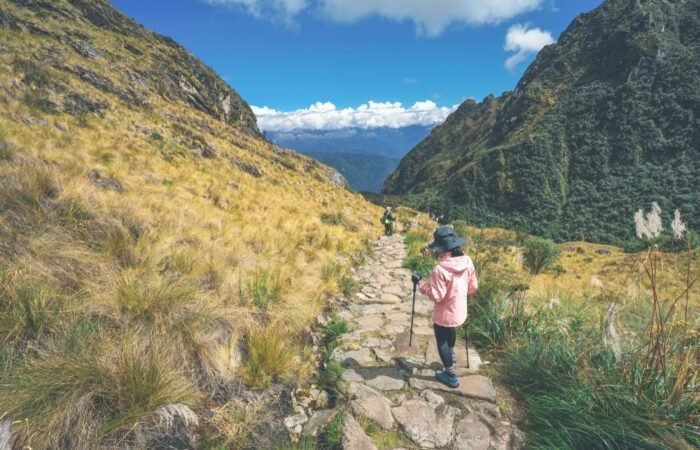

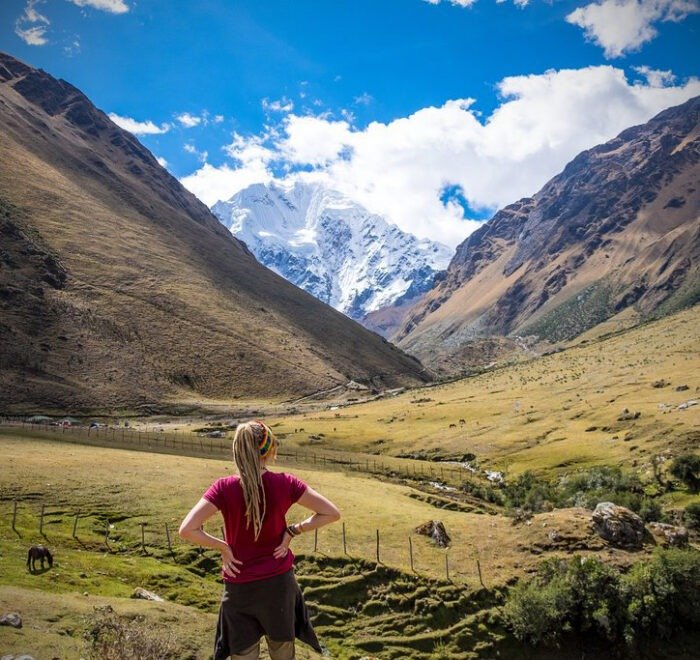
The Salkantay Trek to Machu Picchu is one of the best alternative routes to the world famous Inca Trail. Long the way you’ll see some of the most incredible landscapes as well as enjoy the adventure of a lifetime. You’ll walk through the Andean mountains surrounded by snowy peaks to the warm and humid jungle.
There are plenty of different species of wildlife and some beautiful flora for you to see, in addition to witnessing Andean life in small villages.
The snowy peak of Salkantay itself is sacred and appreciated by all who live in the area. It’s 125km northeast of Cusco and sits at 6,264 masl. Professional climbers have been hiking the mountain since the year 1952. This is because it’s very easy to access from Cusco.
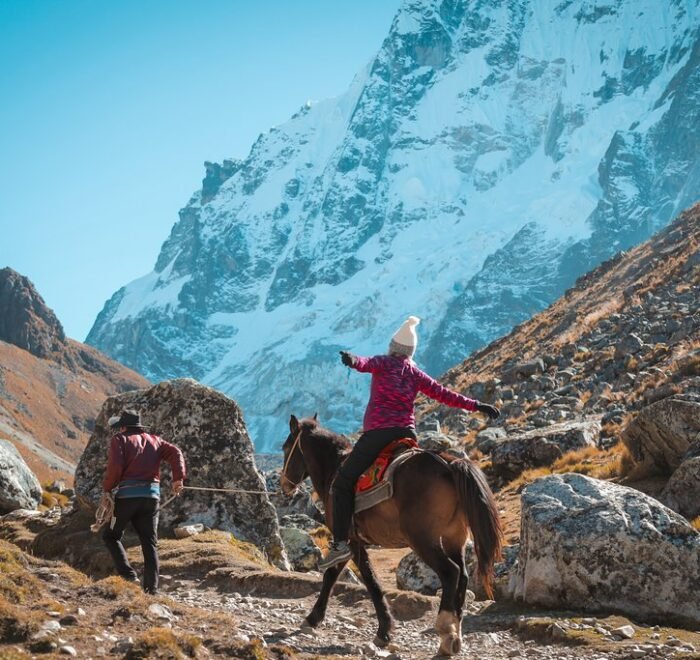
The Salkantay Trek to Machu Picchu is one of the best alternative routes to the world famous Inca Trail. Long the way you’ll see some of the most incredible landscapes as well as enjoy the adventure of a lifetime. You’ll walk through the Andean mountains surrounded by snowy peaks to the warm and humid jungle.
There are plenty of different species of wildlife and some beautiful flora for you to see, in addition to witnessing Andean life in small villages.
The snowy peak of Salkantay itself is sacred and appreciated by all who live in the area. It’s 125km northeast of Cusco and sits at 6,264 masl. Professional climbers have been hiking the mountain since the year 1952. This is because it’s very easy to access from Cusco.

With the Salkantay Trek being so popular, you’ll find there are many different lengths available. These range from 3 days and up to 7 days, which includes a part of the Inca Trail as well. If you don’t want to end at Machu Picchu, you can also go on a 2 day trip to hike to the Salkantay Pass. Here you’ll find all the tours on offer:
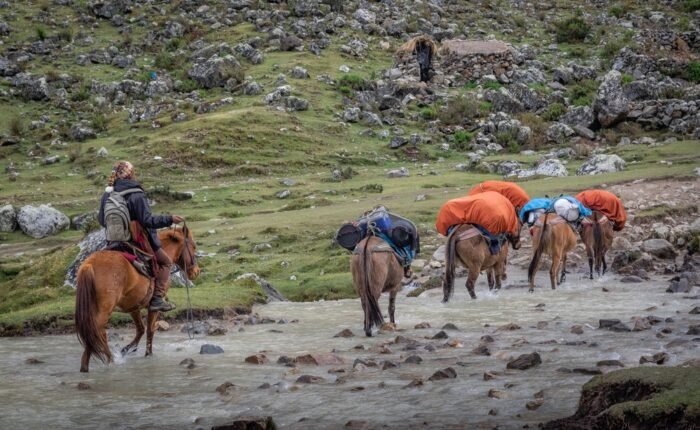
All of our horsemen are from Mollepata, which is the starting point of our trek. We make sure to employ responsible people that are serious about what they do. This way, they do an excellent job at transporting everyone’s items along the trail with mules and are in charge of getting your gear safely to each campsite where it will be waiting for you.
Our horsemen are very content with us receiving a good salary and benefits at the end of each season. Peru Hike provides all the mountain gear and uniforms to the horsemen. These guys can be of great help in an emergency because they know the area and trail like the back of their hand.

Peru Hike relies on an extensive network of
highly trained guides and expert ambassadors as a
premise to guarantee excellence in our services. We are
fully conscious that an excellent guide is key to making
your trip a memorable experience, which is why we are
extremely demanding when recruiting and regularly
training our guides.
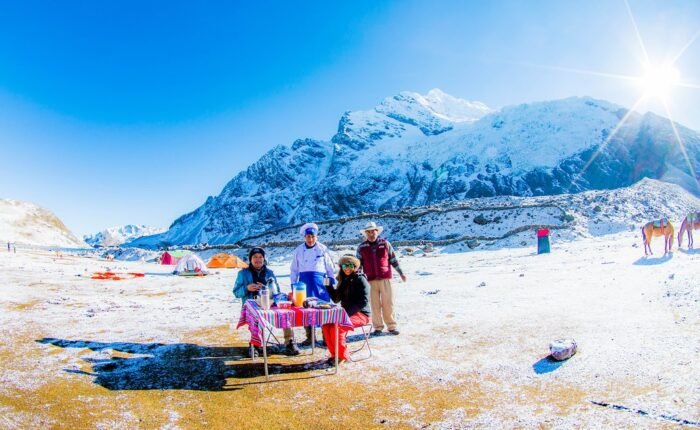
In all of our trekking trips, the chef ensures high-quality meals on time, an adequate diet both in its quality and quantity. The secret lies in the careful selection of our team of chefs, whose top-quality restaurant background,
creativity and passion for their jobs provide an unequalled touch to all of our meals. We do not have set menus since we wish to give our chefs the chance to create, innovate and surprise our clients through delicious dishes in every
trip.
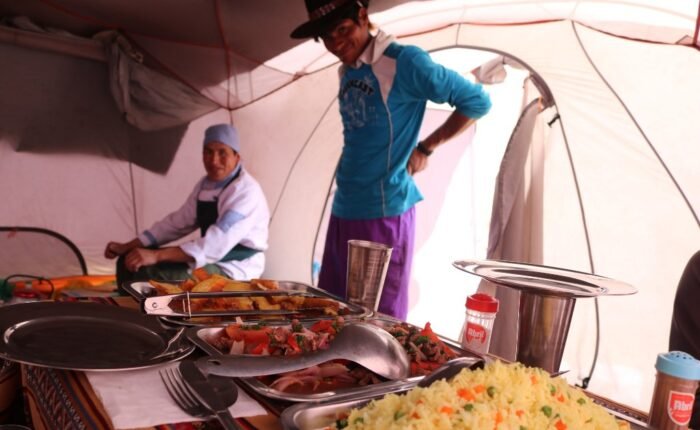
We do not have set menus since we wish to give our chefs
the chance to create, innovate and surprise our clients
through delicious dishes in every trip. We provide
general guidelines, guest information on dietary
restrictions and preferences and, most especially, the
tools for a constant updating of our cooks’ knowledge in
both Peruvian and International cuisine through
specialization courses and training.

Peru Hike Company has created the most amazing exclusive campsites for our trekkers to relax in after a long day on the trails. On the Salkantay route, you’ll stay in our Sky Camp under the stars, our Andean Huts in Chaullay or Collpapampa, and our Jungle Domes in the middle of nature in the jungle.
On other routes, you’ll find we have private campsites away from other groups and in some instances, homestays with local families for a truly unique experience.
Before You Go, What You Should Know
When booking a trek like Salkantay, you want to be as prepared as you can be. To help you, we’ve come up with a few of the things you should expect when taking this tour.
You’ll be hiking at very high altitude, and going up to a little over 4,600 masl. This can mean you feel light-headed, tired easily, nauseous, headaches, and more. To avoid feeling like this, you should take the proper precautions, which we’ll go over below.
This trek is relatively moderate overall, and most people can complete it if relatively fit, however day 2 is a real challenge. The steep and winding climb up to the Salkantay Pass takes a lot out of you. The rest of the day is downhill but can take its toll on your knees and ankles as you endure a full 10 hours walking this day.
The Salkantay Trek is one of the top choices for many hikers because of the beautiful landscapes and views you see throughout. From snowy mountain peaks to thick jungle, you’ll get to enjoy a whole range of sights. Don’t forget to take a good camera to capture all the flora and fauna.
You’ll need to be well prepared when it comes to clothing as you will experience very cold temperatures during the first day and a half, but will then get very warm as you head down into the jungle. You may also see some rain.
This is the second most popular trail to Machu Picchu, and there’s no limit on numbers like there is for the Inca Trail, so, as you can imagine, it can get busy. This is particularly true during the dry season from May to October.
You need a lot of energy to keep your strength up at such high altitude. Thankfully, a full team of cooks will join you and you’ll be amazed at the food they whip up in the middle of the mountains. There’s no doubt you’ll eat plenty of delicious food on the trek.
Your guide will be informing you all along the way about the history and more regarding your surroundings. Be prepared to come away knowing a lot about the Incas as well as the Andean flora and fauna.
The Salkantay Trek is a popular multi-day hiking trail in Peru that takes you through diverse landscapes, including snow-capped mountains, lush forests, and high-altitude deserts. The trek usually lasts for 3-5 days and covers a distance of approximately 60-70 kilometers (37-43 miles). It is named after the Salkantay mountain, which is one of the highest peaks in the region at 6,271 meters (20,574 feet). The trek culminates in a visit to the historic ruins of Machu Picchu, which is one of the most popular tourist attractions in Peru.
The Salkantay Trek is rated moderate to challenging. You’ll find some days easier than the others, but it can be difficult. To make sure you’re well prepared you should do some training beforehand and make sure you’re in good shape. You’ll also need to prepare for the altitude so it affects you as little as possible.
To help you know more about this trek, we’ve got some interesting facts to share with you.
To save you from asking too many questions about your trip, we’ve put together some tips to help you with preparation.
Finally, we share with you some recommendations, to make sure your trip goes smoothly and you don’t come up against any issues later on.
pointing-left, some travellers book the trail once they arrive to Cusco, but this sometimes means there’s no space left or that they don’t get to go on the day they had planned. This can be really disappointing when you were looking forward to the trek.
If you plan and book the trek ahead of time, it will give you more time to relax in the city. Your vacation will also be less stressful as everything is already taken care of.
In Peru, we enjoy a dry season and a wet season. Dry season is from May to October, and November to April is wet season. It can rain a lot in those months, so keep that in mind if you want to come during wet season. The temperature tends to be warm from November to April, however.
In the dry season, you see less rain, but it does get very cold at night. You can also expect to see more hikers on the trail. Consider these facts when booking your trip.
As we mentioned before, there are weight limits to your luggage. Make use of a packing list so you bring the right amount of each thing to not go over the weight and to ensure you have everything you need.
Many agencies and operators won’t let you on the trek if you aren’t insured. If they do, they probably aren’t very reputable. If anything does happen to you and you aren’t insured, the health care in Peru can be very expensive.
You’ll get snacks along the way and plenty of food, but it’s always a good idea to take extras, like dried fruits and nuts, as you never know when hunger will strike.
Most trekkers will tip the guides, cooks, and horsemen. Consider their work and how tough it is when thinking of an amount. It’s up to you.












